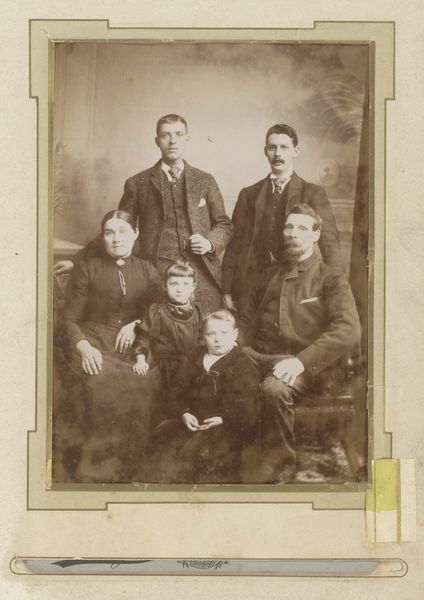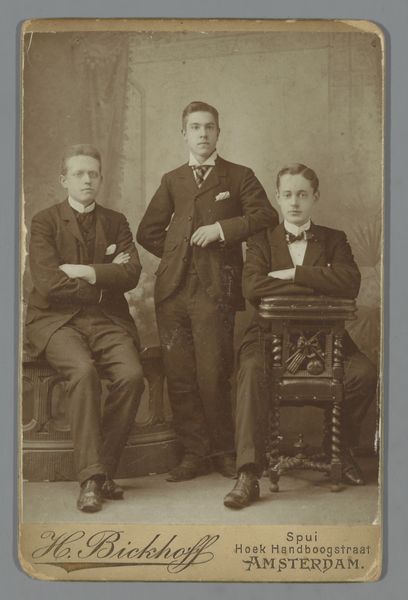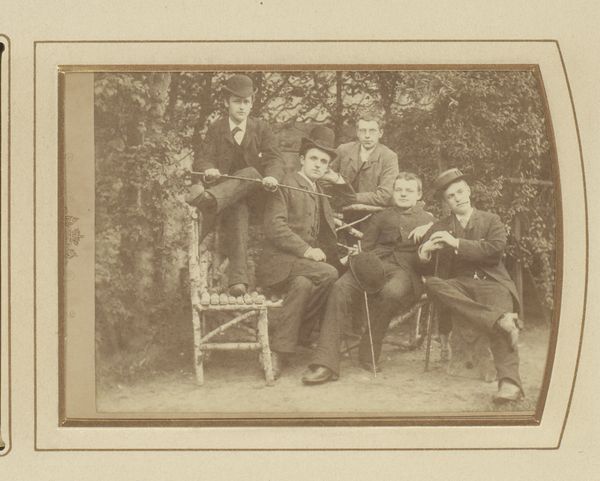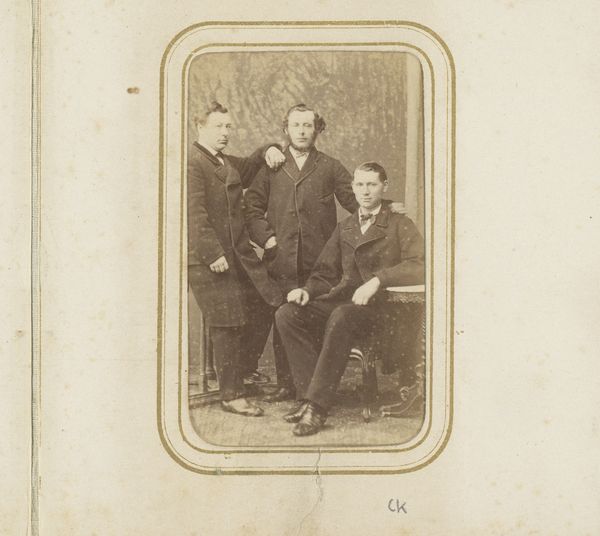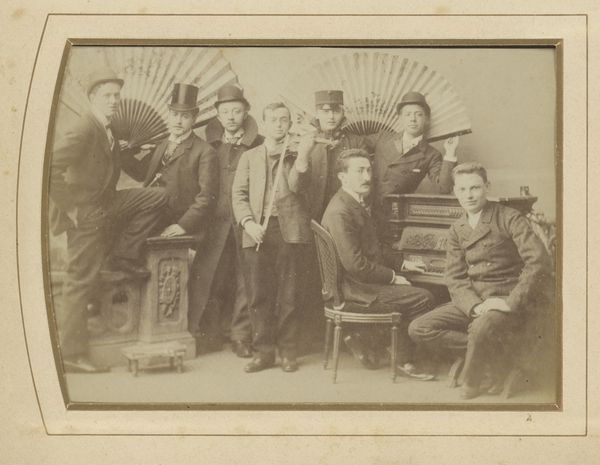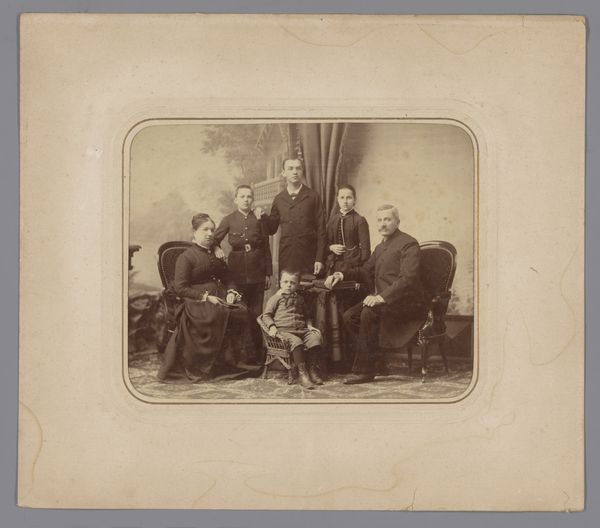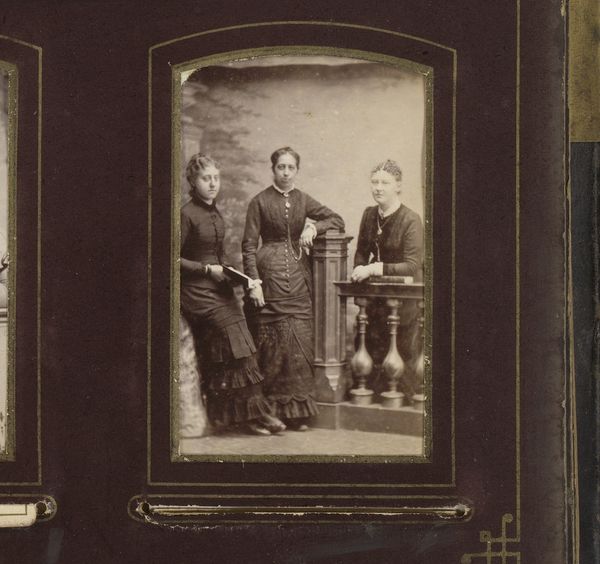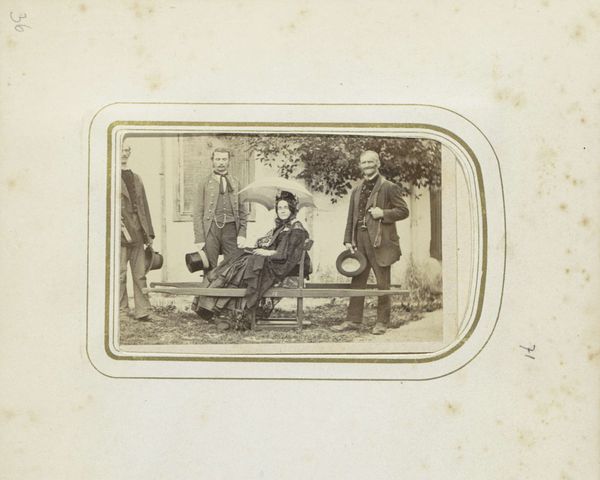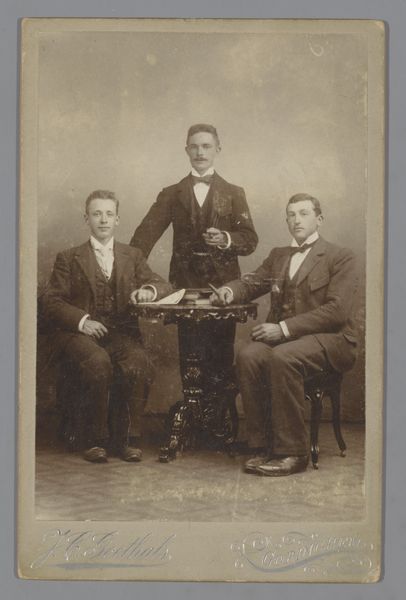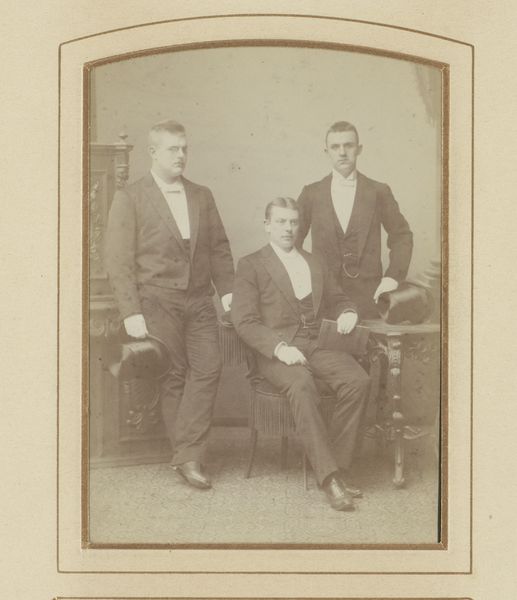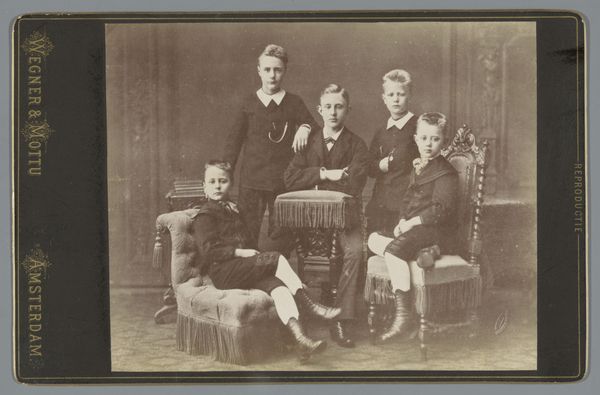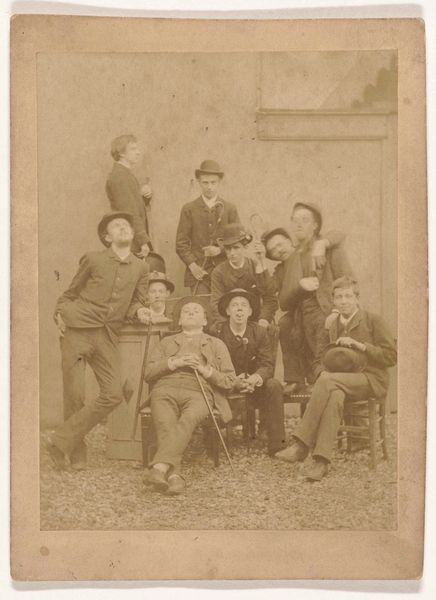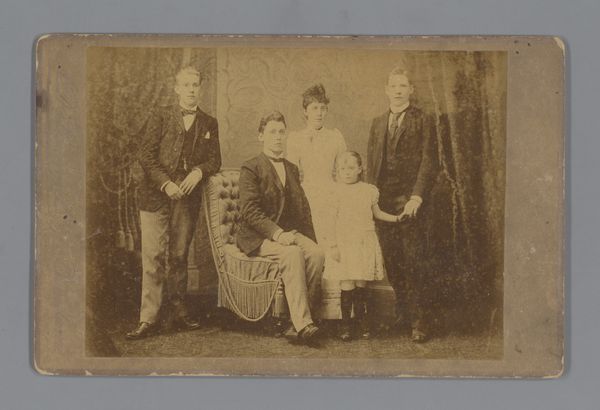
photography, gelatin-silver-print
#
photography
#
historical photography
#
group-portraits
#
gelatin-silver-print
#
19th century
#
costume
#
genre-painting
#
realism
Dimensions: height 98 mm, width 146 mm, height 108 mm, width 168 mm
Copyright: Rijks Museum: Open Domain
Curator: Here we have "Portret van vier jongemannen," or "Portrait of Four Young Men," a gelatin-silver print estimated to have been made between 1870 and 1900. What's your first impression? Editor: I'm struck by the almost performative aspect of it. The composition feels so carefully arranged, almost staged. Curator: Absolutely. The work demonstrates a fascinating tension between the relatively new technology of photography and the established conventions of portraiture in painting. Consider the materials. Gelatin-silver prints allowed for mass reproduction and broader accessibility, challenging the elite domain of painted portraits. These young men, by choosing this medium, participate in a shift of representation, perhaps aspiring to a level of visibility previously reserved for the upper classes. Editor: Yet, even with this "democratization" of image-making, the formal qualities persist. Note the somber palette, the rigid poses. The tonal range emphasizes texture—the nap of the jackets, the curls of the hair—drawing us in, despite the lack of vibrant color. Curator: Precisely. The very act of sitting for a photograph like this—the cost, the time investment—suggests a desire for social mobility and self-presentation. What were their lives, their ambitions? The photographic process was part of industrial expansion and burgeoning economies. These men were becoming visible because of their economic function within this capitalist structure. Editor: But structurally, their gazes create a fascinating dynamic. Only one engages the viewer directly; the others seem lost in thought, creating a sense of individual narratives within a collective frame. Their arrangement invites a kind of semiotic interpretation; each element–the clothing, the postures, even the faux-landscape backdrop–contributes to the overall meaning. Curator: Agreed. These stylistic choices are deliberate assertions. The use of the "genre painting" aesthetic tells me these were made for broad circulation and consumption by the bourgeois, the prints acting as both a celebration of societal achievement and as tokens of their success within society’s changing economic strata. Editor: It’s intriguing how the materiality of the photograph – that specific tone, the slightly blurred details – imparts a historical distance while the formal arrangement maintains a certain visual clarity. Curator: This portrait is both an intimate glimpse into the past and a statement on the forces shaping these young men’s lives and aspirations, a snapshot, if you will, of social aspirations and capitalist possibilities made manifest through photographic practice. Editor: Ultimately, "Portret van vier jongemannen" manages to be both a document of a particular era and an example of form and arrangement where the image creates compelling tension with its subjects.
Comments
No comments
Be the first to comment and join the conversation on the ultimate creative platform.

